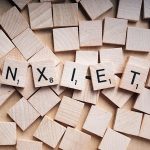By: Christina Bein
In the book Burnout by Emily Nagoski, the author provides several stress management strategies that can help individuals cope with and prevent burnout.
Emily Nagoski explains the concept of “closing the stress cycle” as the idea that stress is a physiological response that needs to be completed or “cycled through” in order for the body to return to a state of calm.
In other words, it’s not enough to simply “manage” or cope with stress; we also need to actively engage in activities that help our bodies complete the stress response cycle.
Nagoski gives the example of animals in the wild who experience stress, such as a zebra being chased by a lion. Once the zebra escapes, it shakes and trembles to release the tension from its body and complete the stress response cycle. Humans, however, often experience chronic stress that is not resolved by a single event, and we may not engage in activities that help us complete the stress cycle.
To close the stress cycle, Nagoski suggests engaging in physical activities that release tension and promote relaxation, such as exercise, yoga, or dancing. She also suggests engaging in social connection activities, such as spending time with loved ones or engaging in a group activity, as this can help us feel supported and reduce feelings of isolation and loneliness.
Here is a summary review of some of the key strategies with tools I’ve added to support the execution of Nagoski’s highlighted themes:
- Prioritize rest and recovery: Nagoski emphasizes the importance of taking breaks and getting enough sleep, as well as engaging in activities that promote relaxation and self-care.
Examples of self-care activities include:
Deep breathing exercise: Take a slow, deep inhale for a count of four, hold the breath for a count of four, then exhale slowly for a count of 6. Repeat 2+ more times.
Progressive muscle relaxation: This technique involves tensing and then relaxing different muscle groups in the body, one at a time, in order to release physical tension and promote relaxation.
Coloring, panting, knitting, warm bath/shower, playing music, walking, hiking.
- Identify and challenge negative thoughts: The author suggests identifying and challenging negative thoughts and beliefs that can contribute to stress and burnout and instead focusing on positive and realistic thinking.
CBT worksheets to help reframe negative thoughts.
- Practice mindfulness: Nagoski suggests practicing mindfulness techniques such as meditation and deep breathing to help manage stress and improve emotional regulation.
Guided meditation: You can now find it on many apps, websites, and television platforms [Headspace (also on Netflix), Calm, Inside Time. YouTube].
- Engage in physical activity: Regular exercise has been shown to have numerous benefits for both physical and mental health, including reducing stress and anxiety.
You can start off by going on daily walks around a neighborhood or park. Sports like bouldering (solo) or basketball (team) have you focus on the present activity.
- Build social connections: The author emphasizes the importance of building and maintaining strong social connections, which can provide support and help buffer against stress.
Take the initiative to reach out to a family member or friend. Building connection means showing up to allow closeness to grow.
- Set realistic goals and boundaries: Nagoski suggests setting realistic goals and boundaries, as well as learning to say “no” to excessive demands, in order to prevent overwhelm and burnout.
Take the time to determine your absolute “no’s” and learn to communicate how to protect those boundaries.
Overall, Nagoski’s stress management strategies focus on developing healthy habits and coping mechanisms that prioritize self-care, positive thinking, and meaningful connections with others. Including these activities in your routine will promote one’s well-being and reduce burnout.






